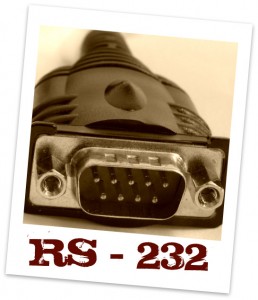RS232 handshaking for the non-technical user
A recent project meant i had to explain a RS232 integration to non technical users.
RS232 is a very simple way of communicating between two systems.
You can think of it as a simple speech communication a good example being the exchanges of speech that go on in a parliment or any sort of debate.
Members of parliment wish to speak to the house but if they all speak together then the message will be lost or confused due to the inability to hear the different messages coming from each parlimentarian.
To solve this problem RS232 has hardware flow control or handshaking.
When each member of the house has a message they stand and raise there hand to say that they are ready to speak. The speaker of the house then indicates to one member that the house is ready to hear their message and in this way one message at a time is heard.
In an RS232 system only one line of communication is established. Imagine a secretary and her boss dicatating a letter but the secretary has no short hand skills. Each small section of the letter dicatated by the boss is brought to an eand by the Secretarty saying “STOP” while she finishes writing that section on the word processor. When the secretary is ready to continue she indicates this to the boss and the next section .
In the RS232 system these “STOP” and “GO” messages are indicated by the high or low level of the CTS flag. The sending system has a similar flag (RTS) which indicates that it has data ready to send to the recipient.
| 9 Pin Connector on a DTE device (PC connection) | |
| Male RS232 DB9 | |
| Pin Number | Direction of signal: |
| 1 | Carrier Detect (CD) (from DCE) Incoming signal from a modem |
| 2 | Received Data (RD) Incoming Data from a DCE |
| 3 | Transmitted Data (TD) Outgoing Data to a DCE |
| 4 | Data Terminal Ready (DTR) Outgoing handshaking signal |
| 5 | Signal Ground Common reference voltage |
| 6 | Data Set Ready (DSR) Incoming handshaking signal |
| 7 | Request To Send (RTS) Outgoing flow control signal |
| 8 | Clear To Send (CTS) Incoming flow control signal |
| 9 | Ring Indicator (RI) (from DCE) Incoming signal from a modem |


